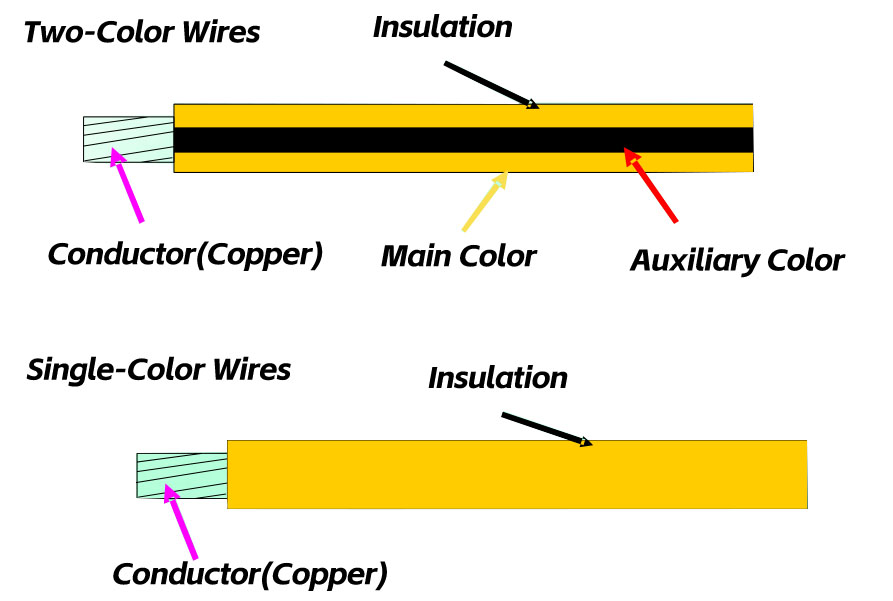Have you ever felt confused by the intricate wires inside your car when inspecting or repairing it?
The color, cross-sectional area and number of wires all have their specific meanings and standards, which are crucial for ensuring the safe operation of the vehicle's electrical system.
Wire color coding
Wire color coding is a standardized method used to distinguish electrical systems with different functions. This coding system helps avoid incorrect connections during installation, maintenance or repair, thereby improving work efficiency and reducing electrical faults.
Monochromatic wires and bicolor wires
The insulation layer color of wires is divided into two types: single color and double color.
Monochromatic wire: The insulation layer color is a single color, represented by an English letter. For example, red is represented by "R".
Two-color wire: The insulation layer color is composed of two colors, the main color and the secondary color, with a ratio of the main color to the secondary color of 3:1, represented by two English letters. The first letter represents the primary color and the second letter represents the secondary color. For example, the red and white bicolor wires are represented by "RW".

Color code table
The following are some common wire colors and their codes:
Red (R) - RD
White (W) -WH
Black (B) - Bk
Green (G) -Gn
Yellow (Y) -YE
Brown (N) -Br
Blue (U) -Bl
Gray (S) -Gr
Purple (V) - VI
Orange (O) - Or
Pink (P)
Selection of cross-sectional area of wires
The cross-sectional area of the wires selected varies depending on the power of the electrical appliances used. The following are some common circuits and their recommended cross-sectional areas:
Taillights, roof lights, indicator lights, instrument lights, license plate lights, electronic clock: 0.5mm ²
Turn signals, brake lights, distributors, etc. : 0.8mm ²
Headlamp low beam, electric horn (below 3A) : 1.0mm ²
Headlamp high beam, electric horn (3A or above) : 1.5mm ²
Other circuits above 5A: 1.5-4.0 mm²
Electric heating plug: 4-6 mm²
Power cord: 4-25 mm²
Starting circuit: 16-95 mm²
Selection of wire types
Depending on the installation location of the electrical appliances, the types of wires selected also vary. For example:
High-temperature resistant wires should be used in high-temperature areas (such as engine Windows, etc.).
Ordinary wires are used in general areas.
Wire numbering standard
The numbering standard of wires is helpful for identifying the type and specification of wires.
The following are some common wire numbers and their usage standards:
QVR, QVR105: Comply with the JB/T 8139-1999 standard
AVSS, AVS, AVSS105: Comply with the JASO D 611 standard
AV: Complies with the KS C 3311 (JIS C 3406) standard
AEX: Complies with the JASO D 608 standard
QB-B: Complies with the QC/ T730-2005 standard
SHE-K: Shielded wire

Now, you should have a deeper understanding of the color coding, cross-sectional area selection and wire numbering standards in automotive wire systems. These standards are crucial for ensuring the safe operation of the vehicle's electrical system. By following these standards, the safety, reliability and maintenance efficiency of automobiles can be enhanced.
It is very important for car manufacturers, maintenance technicians and car owners to understand and comply with these coding standards. This not only helps protect the vehicle, but also contributes to the safety of the driver and passengers. Next time when you face the wires in your car, you will be able to identify and handle them with more confidence.